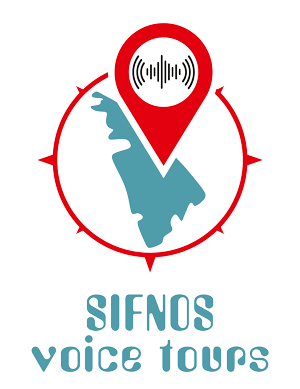History of Sifnos
Learn about the b.C. history of Sifnos
Flashback to the history of ancient times of the island and the Cycladic civilization
Neolithic era
According to the legend "Sifnos" was the name of the son of the Attic hero Sounios, and the island was named after him. According to another version the appellation Sifnos derives from the adjective "sifnos" that means "empty" because of the many underground mine galleries in the subsoil of the island. The island is also mentioned by the appellations: "Akis", "Meropi", "Sifanos", "Sifana" or "Sifado".
Most of the historians mention that Sifnos was first inhabited by Pelasgians and then by Phoenicians, Kares and Leleges. According to the legend these inhabitants was chased by the king of Crete Minoas, who made his sons governors of Cyclades. The town "Minoa" as well as the spring "Minoa" is also mentioned. At those times, the Aegean was inhabited by a tribe called the Proellines or Aegeoi. Later on, they have been mixed with the Cretans and the Achaeans.
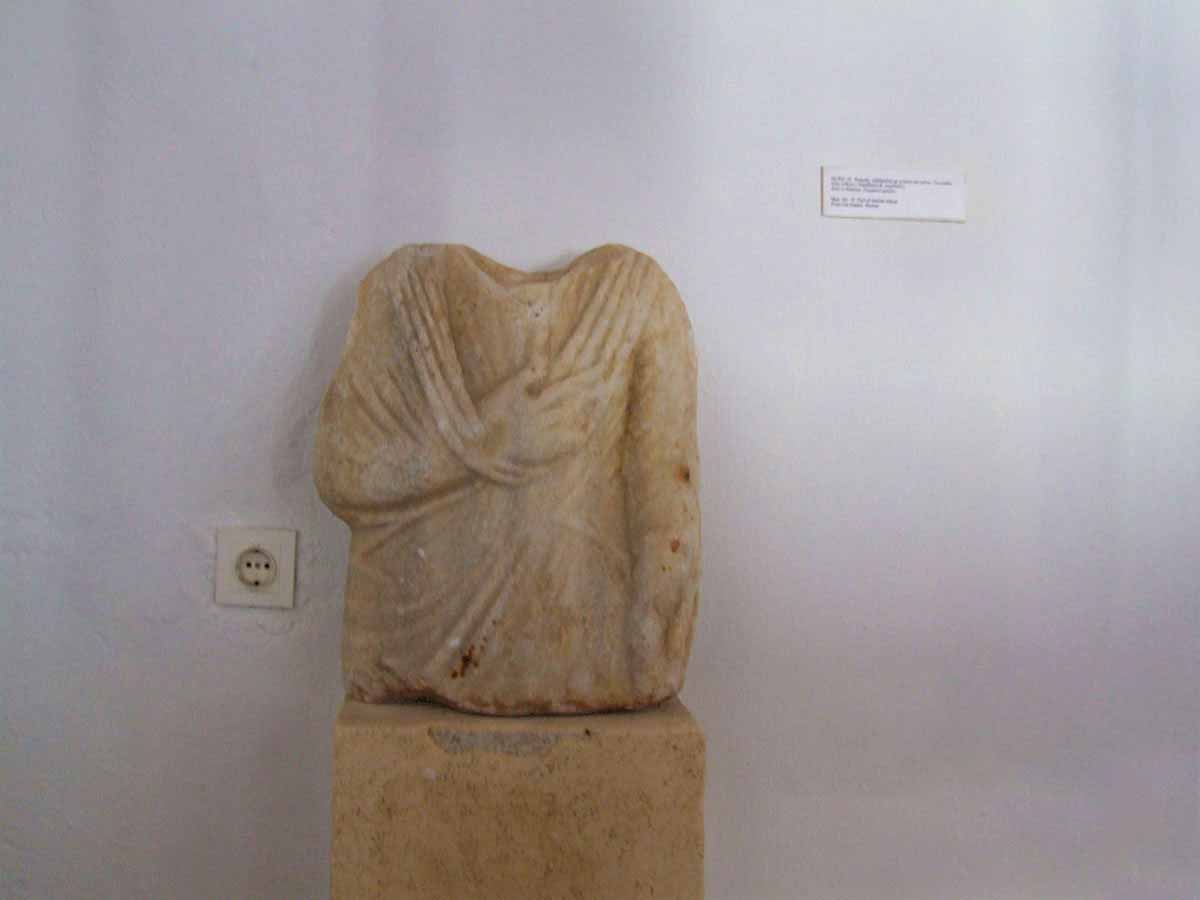
Older signs of residential installation that have been noted in Cylades date from the late 5th millennium B.C. During the Neolithic era, in the Aegean, one of the oldest settlements in Europe has been developed. Important factors that have contributed to the creation of the early Cycladic settlements, was their important geostrategical position in the Aegean Sea and their mild climate.
Copper era
The Neolithic progress was followed by the early copper era. During the following era a particular civilisation is developed in Cyclades, which develops along with the Protoelladic civilisation and the Protominoan civilisation of Crete. It is Protocycladic civilization, which has been studied by the great Greek archaeologist Christos Tsountas in 1898 and 1899. In almost all the islands of Cyclades, the excavations brought to light small settlements built-up in coastal locations.
In Sifnos, Christos Tsountas brought to light graves and foundations of settlements at the location Akrotiri in Platis Gialos, Vathi and Froudi of Kalamitsi. These graves date from the second half of the 3rd millennium. In particular, the prehistoric graveyard of Platys Gialos, which was first studied by Polak in 1896, offered important information on the burial customs, on the grave types and on the ceremonial customs of the islanders of that time.
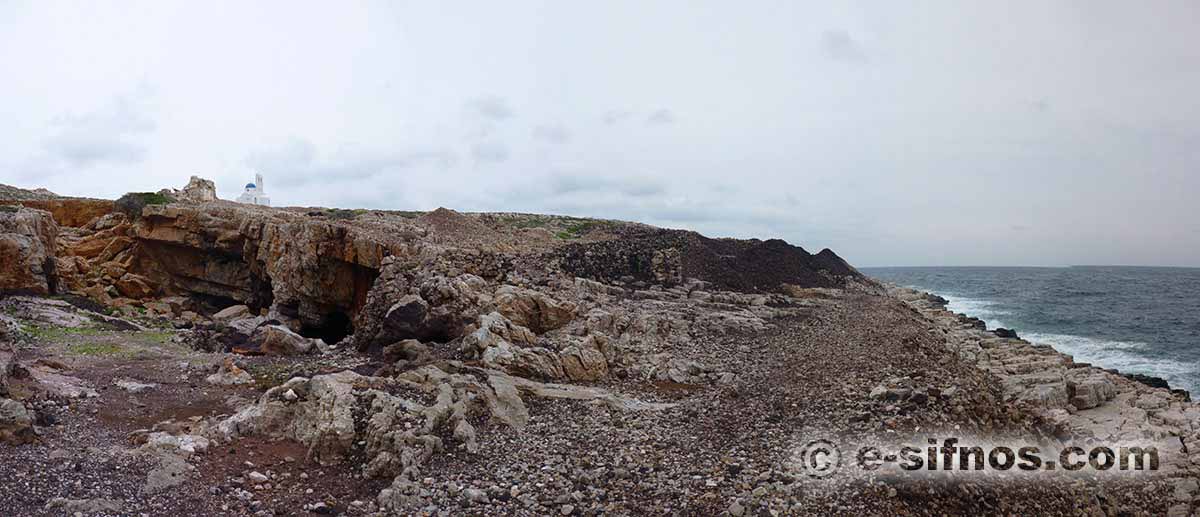
The archaeological findings opened the way for the study on the economic conditions of the island in that time.So, it’s certified that during that time Sifnos had a very developed mining activity, which mainly regards the mining of silver and lead. Evidences of this activity have been found at the locations of Agios Sostis, Agios Silvestros and Xero Xilo. The latest scientific researches come to the conclusion that Sifnos was the most important providing source of minerals during the early copper era.
Middle Cycladic civilization
As regards the period of the Middle Cycladic civilization it is reported that a settlement was already developed in Kastro of Sifnos, which is proved by the ceramic findings that have been found in the excavations.
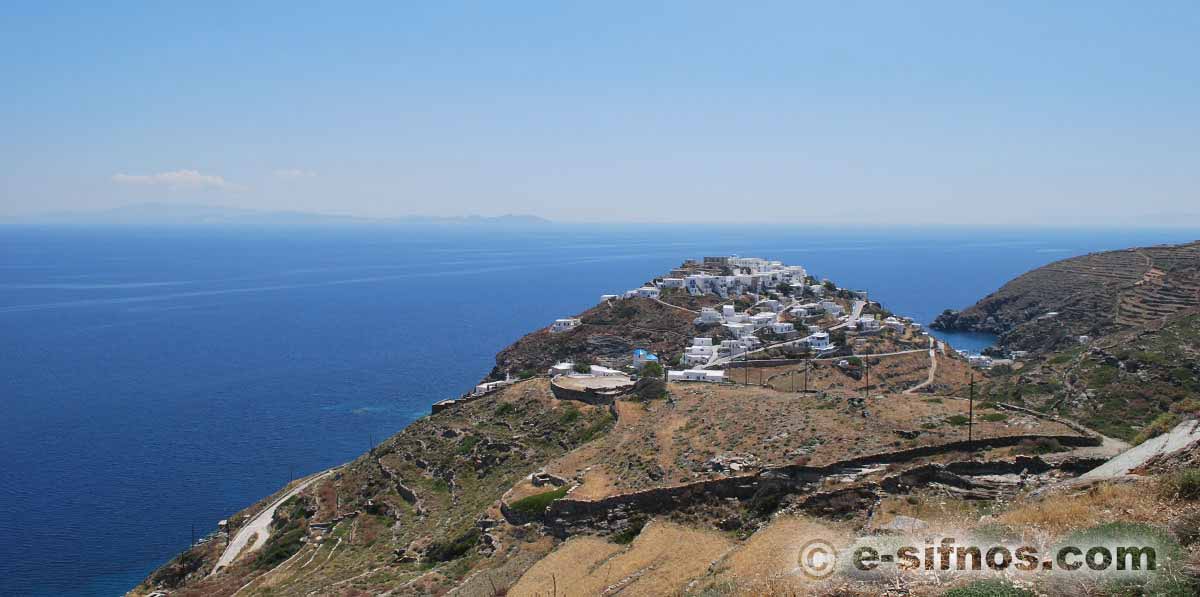
The naval supremacy of Minoas in the Aegean was subversive for Cyclades. The historian Thucydides mentions the creation of Cretan colonies on them and especially as regards Sifnos, Stefanos Vyzantios mentions that at this time, there was a town with the characteristic appellation "Minoa". The location of this town hasn’t been located yet by the excavations. The excavations of Filipaki proved in this location there was a small settlement in the 3rd millenium B.C.
Mycenean civilization
The Achaeans spread to the entire Aegean at the early 2nd millenium, B.C. Until the end of 13th century B.C. the Mycenean civilization it is the new power in the east Mediterranean. Mycenaean findings were discovered in Sifnos in various locations, but mainly in Froudi of Kalamitsi, at the citadel of Agios Andreas and at another citadel at the north part of the island on the mountain Agios Nikitas.
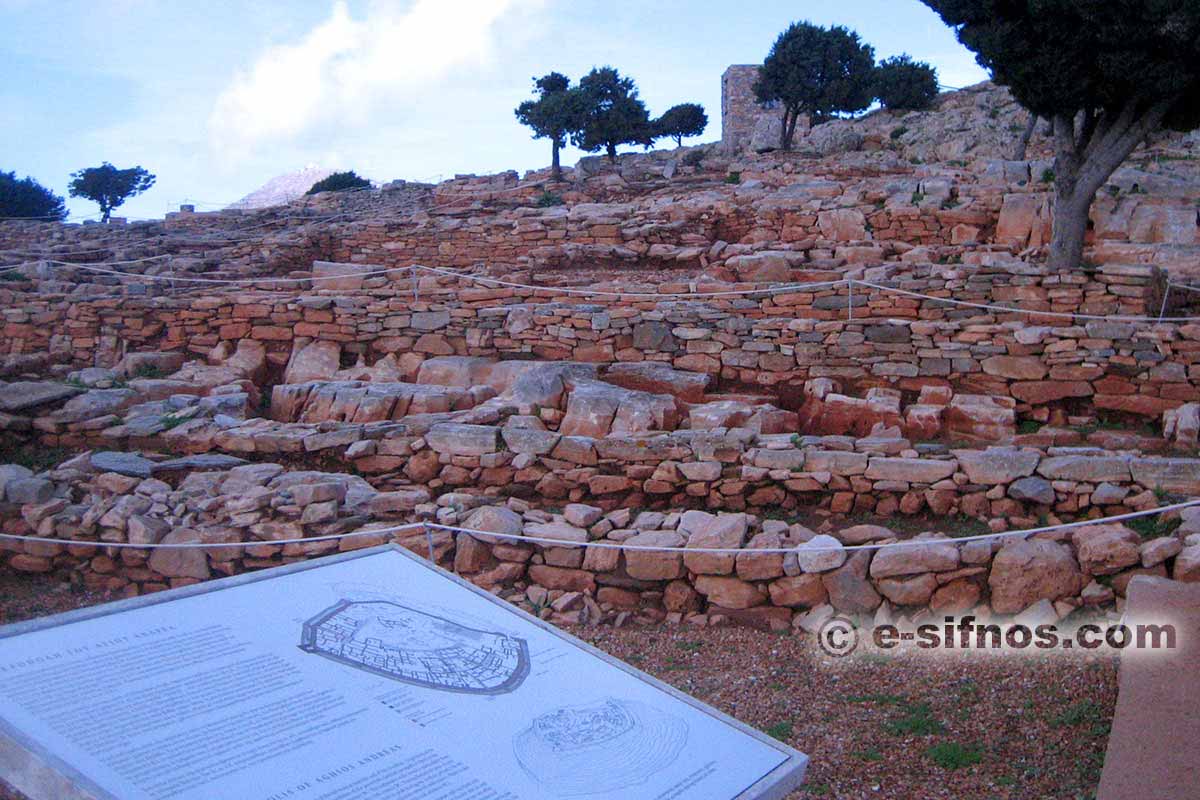
The Ionian colonists came to Sifnos in about 1130 - 1120 B.C. After the arrival of the new colonists, a new phase starts which has been marked by the need for peaceful and safe living of the residents and by the integrated coping with the new residential needs.
6th century b.C.
So, at this time, according to Herodotus the ancient capital of Sifnos, the "asty" (=city) is established, at the centre of the eastern side of the island, in today's Kastro. The new city begins to extend and from the 6th century B.C., it starts being surrounded by wall. The excavations realised by British Archaeological School in 1934-1938 brought to light remains of settlements and graves dating from the 8th century, that prove the continuous life in Kastro.
In the 6th century B.C. the old stone-built temple becomes made of marble, while at the same time new houses are built, new works are realized in order to cope with the problems of water supply and drainage and the city is embellished with marble buildings and public mansions such as the Prytanio, the Agora, and many sanctuaries. The graveyard that has been found outside the city shows that it has been in continuous use from the 7th century B.C. till the Roman times. Remains have been found from various works, such as headstones, capitals and other findings, which prove the rich artistic physiognomy of the region.
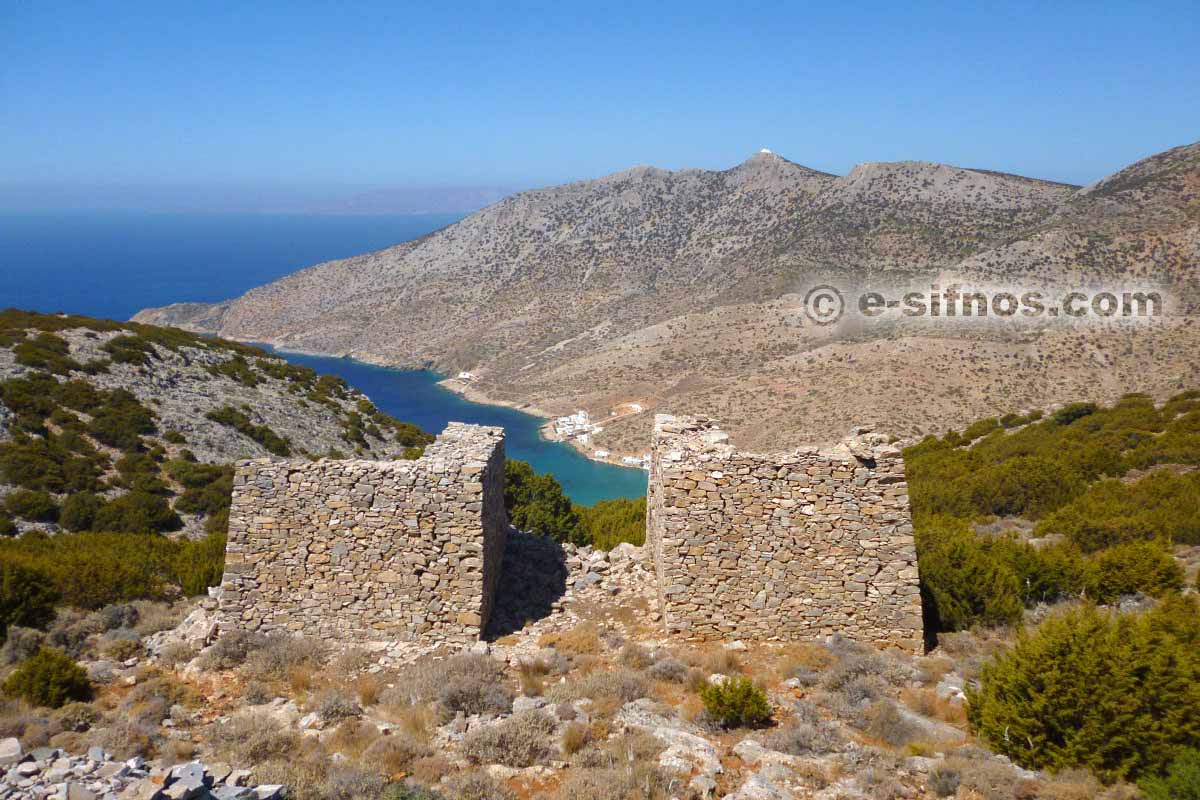
In Sifnos they used to worship as special deities Apollo Enargos, Artemis Ekvatiria, Zeus Epivimios, Dionysos, Pan, Athena and the Nymphs. The main occupations of the residents of the island were agriculture, cattle-breeding, ceramics, and mainly metallurgy.
The 6th century B.C. was the age of a great prosperity. Herodotus mentions that the residents of Sifnos were the richest islanders, because the island had gold and silver minerals.
Till today, in Sifnos, 55 towers and observation posts have been counted dating from the 6th to the 3rd century B.C.
The Siphnian Treasury
A characteristic of Sifnos’ wealth is the fact that in Sifnos they started minting in about 600 B.C., in other words after Aegina and before Athens and Corinth. The most important and famous piece of Sifnos’architecture, which proves the glamour and the flourishing economy of the island is the "Thissavros Sifnion" (The Siphnian Treasury), which has been built and dedicated to the sanctuary of Apollo in Delphi by the residents of Sifnos. It has been built in 525 B.C. and according to Pausanias; it was built from the tithe, which was coming from the profits of the gold mines of Sifnos. It was a very beautiful Ionic building that in its facade instead of pillars it had two Caryatids that were holding the entablature with a rich plastic decoration and a frieze decorated with masterly reliefs along the 4 sides of the treasure of total length of 29,63 cm. The entire building had great sculptures which were excellent samples of mature archaic plastics. Some of them are exhibited at the museum of Delphi. This brilliant building was so impressive that the priests of Delphi's sanctuary gave to the people of Sifnos special honours for their offer.
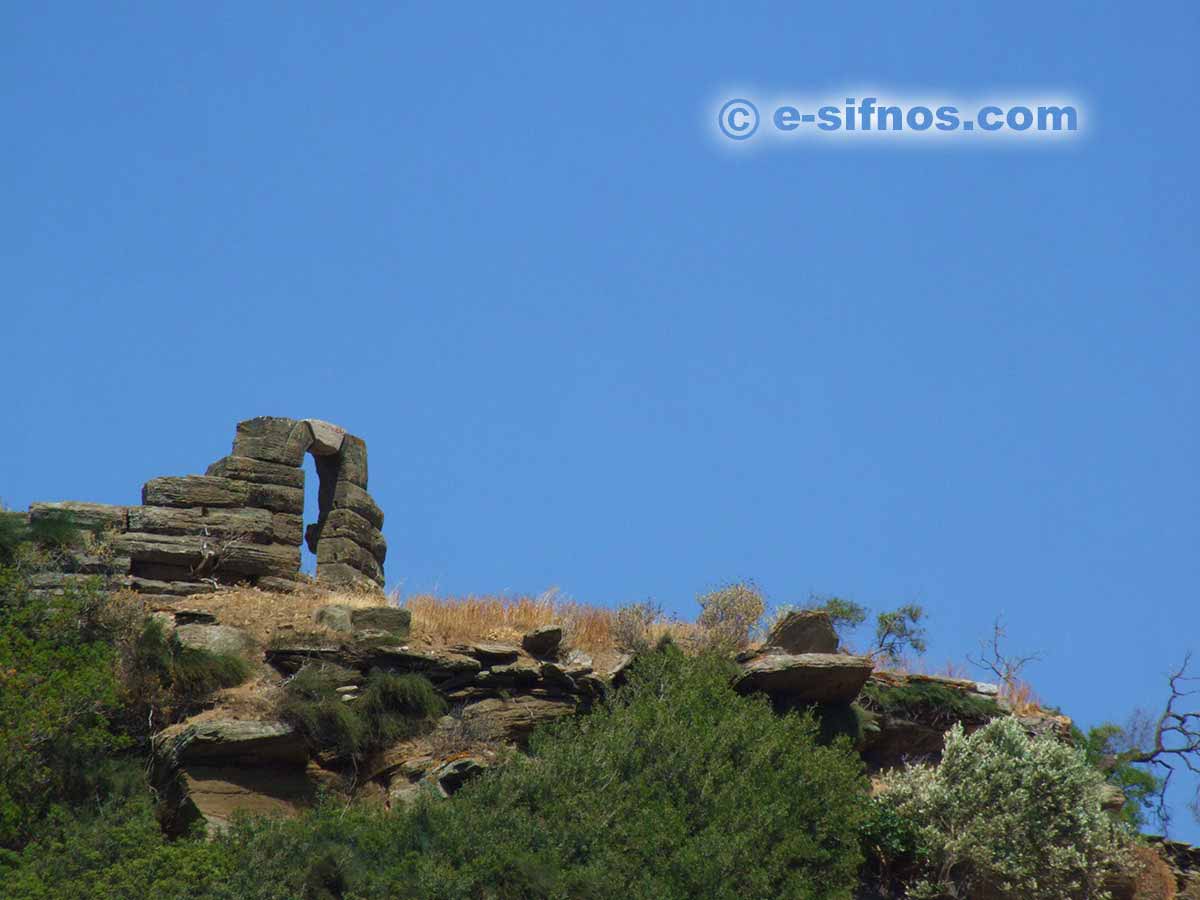
Decadence
In 524 Samian fugitives come in peace to Sifnos; they are political opponents of the shrewd tyrant of Samos, Polycrates, and ask from the residents of Sifnos to help them economically by giving them 10 talents. The residents of Sifnos refuse to give them the money and the Samians make them give them the enormous amount of 100 talents by besieging and pillaging the island. That is when the decadence of Sifnos starts.
In 480 B.C., during the naval battle of Salamina, the people of Sifnos participate with a penticontoros (ship with 50 oars and a crew of 88 men) and in 479 B.C. during the battle of Plataea send a force of infantry lightly armed. After the victory in Plataea the Greeks dedicate to Pythios Apollo in Delphi one golden tripod on which they had carved the names of the cities that had participated in the war. Among these names was Sifnos as well.
Sifnos takes part in 415 B.C. in the expedition of Athenians against Sicily. In 411 B.C., Pissandros imposes oligarchy to Sifnos. A leadership which is friendly towards the Spartians in installed in Sifnos, and a very heavy taxation is imposed, which aims at Spartans keeping the power and the control of the island. Because of its geostrategical position, Sifnos was often a meeting place and place of intense deliberations. In 334 and 333 B.C. the Persian fleet arrived in Sifnos in a diversion operation regarding Alexander the Great.
In 162 B.C. the Cretans attack the city of Sifnos but they are pushed back. Later on they invade the island and they cause pillages and important damages. We have little information on Sifnos as regards the Roman times and the Byzantine times. In 324 B.C. Sifnos becomes part of the "Province of the Islands" of the East Roman Byzantine State.
